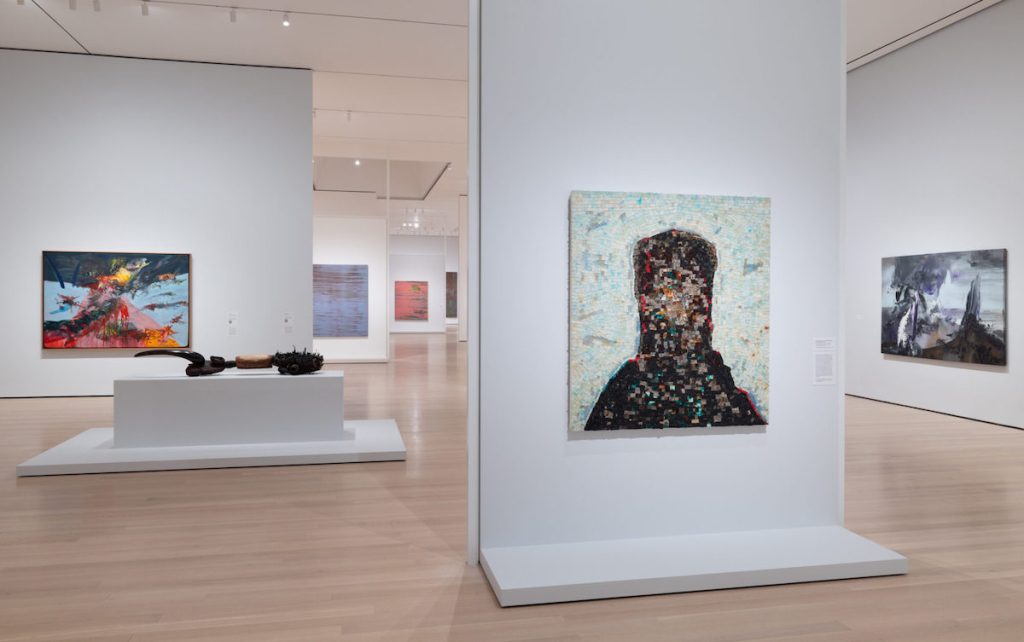In the mid-1960s, Jack Whitten was on a quest to explore light in his paintings, a pursuit not unique to him but one that captures the essence of Western painting history. While many artists have focused on representing light, few have connected their exploration to music. However, Whitten’s inspiration came from jazz musician John Coltrane.
Intrigued by Coltrane’s ability to create “sheets of sound” with his saxophone, Whitten sought to produce “sheets of light” through his painting. Notable works like Light Sheet I (1964) exemplify this mission, featuring a large pink square interrupted by smaller squares in black and green, reminiscent of Josef Albers’s color studies. Whitten used a ceiling-mounted screen printing apparatus to lay acrylic paint on canvas, resulting in a camouflage-like appearance that evokes a beacon of light bursting from a shadowy background.
For Whitten, who is regarded as one of the significant painters of the last fifty years, light encompassed everything—people, places, and works of art. He sought to embody light in paint rather than merely depict it. He famously remarked, “We know now that light occurs in extremely small particles,” illustrating the awe he found in the physics of sight through art.
This theme resonated deeply as I explored his radiant retrospective at New York’s Museum of Modern Art, featuring around 175 of his works alongside the sounds of renowned musicians like Ornette Coleman and Miles Davis. Unlike many exhibitions, those on display captivated, reflecting and refracting light in exhilarating ways.
A highlight of the exhibition is the stunning, 20-foot-long 9.11.01 (2006), where a immense black triangle rises from a white canvas, reminiscent of smoke drifting outward. The tragedy of September 11 is subtly represented through faint grey towers that become visible only on prolonged observation. While discussing this piece, Whitten recalled seeing shards of glass falling from his Tribeca studio that day, adding to the painting’s shimmering surface, which incorporates materials salvaged from the World Trade Center.
Moving to the next gallery, one encounters Black Monolith VIII (For Maya Angelou) (2015), a work that, while named for the poet, does not portray her likeness. Instead, a gnarled black mass is encircled by an acrylic chip frame, reflecting light and creating a stellar visual experience. The painting’s surface glistens in various shades, paralleling the dynamic essence of both Angelou and Whitten himself.
Overall, this retrospective at MoMA stands out as one of the most impactful in recent years. Curated by Michelle Kuo and her team, it flows seamlessly from the beginnings of Whitten’s career through to his death in 2018, devoid of the overwhelming design that typically characterizes New York exhibits. The show’s early galleries, showcasing works like Birmingham 1964, created when Whitten was just in his mid-twenties, anchor the viewer’s understanding of his broader thematic preoccupations. This painting, which draws on a photograph related to the civil rights movement, underscores Whitten’s deep connections to social issues, exploring beauty and light that emerges from the darkest of contexts.



